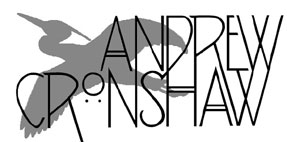
- Andrew Cronshaw website -
- Andrew Cronshaw MySpace -
- Cloud Valley Music website -
- Andrew Cronshaw website -
- Andrew Cronshaw MySpace -
- Back to Reviews Introduction page -
Written in fRoots issue 203, 2000
VARIOUS ARTISTS
Gypsy Summer - Tales Of Surviving
Kuker KP/R 01 SN 990608 KA (1999)
DUVAČKI ORKESTAR MLADI BRAKÁ KADRIEVI
Duvački Orkestar Mladi Braká Kadrievi
PAN 173 CD (1999)
YASKO ARGIROV BAND
Yasko
Felmay FY 8021 2 (1999)
THE ÖKRÖS ENSEMBLE
Transylvanian Village Music
Rounder CD 5160 (1999)
KÁLMÁN BALOGH AND THE GYPSY CIMBALOM BAND
Gypsy Jazz
Rounder CD 5159 (1999)
KÁLMÁN BALOGH ÉS A ROMANO KOKALO
Gipsy Colours
Fonó FA-061-2 (1999)
Sometimes because of the region’s centuries-old political flux and sometimes
despite it, musical ideas have travelled and intermingled throughout the
Balkans, and very significant couriers and enliveners in this musical trade have
been Gypsy musicians.
The album of Bulgarian Gypsy music from Milan
Ognianov’s film Gypsy Summer - Tales Of Surviving shows not only results
of the trade but also some of its recent and contemporary evolution. A gang of
children in the street joyfully improvising vocal beatbox like tabla-vocables,
Anita Christi’s slow smoky vocal with cimbalom and keening violin, a lonely
clarinet plays to the rail-clattering of the Orient Express and then, delivering
the majority of the tracks, there’s the wildly swingy Carandilla Brass
Orchestra, almost New Orleans style until Balkan reeds wail high over the
chugging tuba and crash-clatter of bass drum and snare.
The seven-piece Duvački Orkestar Mladi Braká Kadrievi
is a good workmanlike “Romska orientalna musika” brass band with a repertoire of
Rom and Macedonian traditional material, sometimes borrowing from Spanish Gypsy
music or bullfight pasodobles, or drawing stylistic influences from Egyptian and
Lebanese music. Recorded in its home village of Štip in Macedonia, in comparison
with the Carandilla Orchestra its playing is more muted, less wildly inventive,
and the only reed instrument is a sax.
Clarinettist Yasko Argirov, born into a Gypsy musician
family in the village of Brestovitza in central Bulgaria, has been playing for
weddings, christenings and funerals since he was ten. His album, produced in
Hungary by Nikola Parov, comprises a slice of his large repertoire of
traditional tunes. Accompanied by saxophone, accordeon, guitars, kontra tambura,
tapan, dumbek and drumkit, his playing here is largely fast and hot but
punctuated with slow and lyrical, masterfully squeezing the tone from smooth and
wide to grass-blade squeaky or quivering hard-edged.
The instrumentation on Transylvanian Village Music
isn’t reeds or brass, but bowed and struck strings. Csaba Ökrös’ ensemble, a
product of the Hungarian traditional music revival, consists of two interweaving
violins, a three and a four-stringed viola, a chopping, rippling cimbalom and a
chugging bowed double bass. The group has often has often worked and toured with
Transylvanian violinist Sándor Fodor “Neti”, who was born back in 1922, but
whose playing still shows all the brilliant expressiveness and dancing lightness
for which he’s renowned. As elsewhere in the Balkans, the music of the villages
reflects a cultural mix. “In Transylvania Romanians, Hungarians and Gypsies live
together in peace”, point out the liner notes, and in emphasis guest vocalist
Ági Szalóki sings a Gypsy lament in all three languages.
Playing cimbalom with the Ökrös Ensemble is the
brilliant Kálmán Balogh, who grew up with traditional music and studied
classical music in Budapest. He has played with most of the leading Hungarian
revival bands, and leads his own band which appears, with differing approaches
and partly different personnel, on Gypsy Jazz, recorded in 1997 and, recorded in
1999, also in Budapest’s Fonó Music Hall, Gipsy Colours. Common to both
line-ups, which centrally comprise cimbalom, violins, guitar and bass, are
violinist Sándor Budai and bassist Csaba Novák.
Gypsy Jazz (where the band also features jazz
trumpeter and vocalist Ferenc Kovács) draws on Hungarian, Transylvanian,
Macedonian and other Balkan material and Klezmer and Django-style jazz, crossing
styles with traditional Gypsy adaptability, often overtly so as in the
Balkan-swing Hora De La Bim-Bim, and executing a zippy version of a Gypsy café
standard, the pyrotechnic bird-imitating The Lark.
Gipsy Colours is substantially different in
sound and style; it’s the kind of music made within Roma communities for their
own consumption. All the tracks are songs, using tunes from the traditions of
Hungarian, Vlach, Slovak, Russian, Macedonian and Romanian Roma, with lyrics
either traditional or by the main singers, Ferenc Balogh and guitarist István
Nagy, whose strong vocals have the sort of rousing passion one hears from
Central and Eastern European Roma vocal stars such as Esma Redžepova.
© 2000 Andrew Cronshaw
You're welcome to quote from reviews on this site, but please credit the writer
and fRoots.
Links:
fRoots - The feature and
review-packed UK-based monthly world roots music magazine in which these reviews
were published, and by whose permission they're reproduced here.
It's not practical to give, and keep up to date,
current contact details and sales sources for all the artists and labels in
these reviews, but try Googling for them, and where possible buy direct from the
artists.
CDRoots.com in the USA, run by
Cliff Furnald, is a reliable and independent online retail source, with reviews,
of many of the CDs in these reviews; it's connected to his excellent online magazine
Rootsworld.com
For more reviews click on the regions below
NORDIC
BALTIC
IBERIA (& islands)
CENTRAL & EASTERN EUROPE, & CAUCASUS
OTHER EUROPEAN AMERICAS OTHER, AND WORLD IN GENERAL
- Back to Reviews Introduction page -